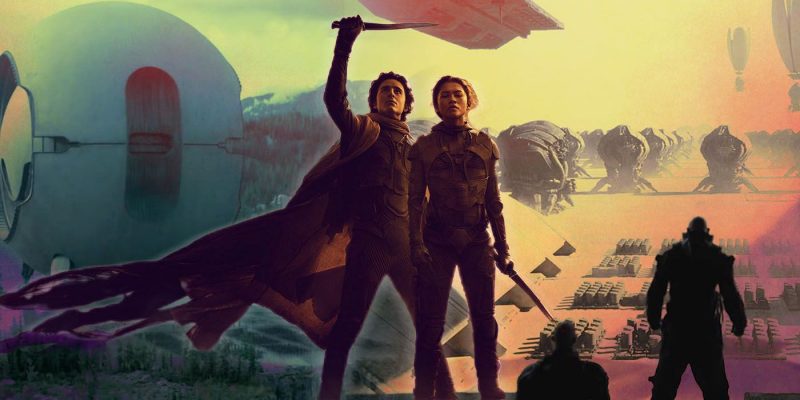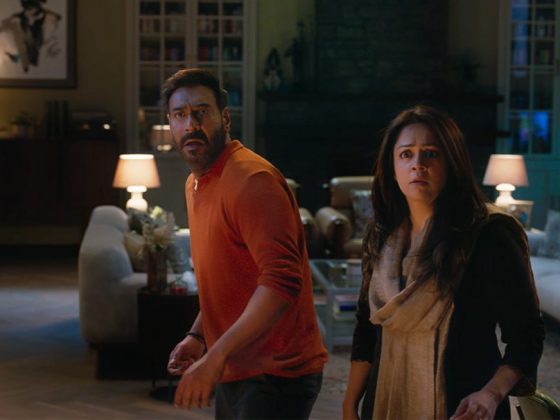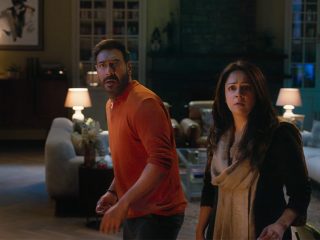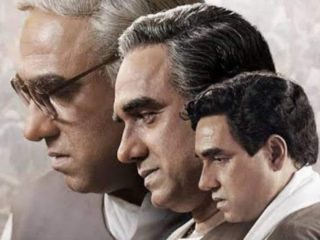The only competition that Dune: Part Two currently has is with its predecessor. Its competition with David Lynch’s Dune is almost nonexistent because the second half of that film is less of a narrative and more of a list with checkboxes highlighting plot beats. And, of course, Jodorowsky’s Dune is so unwieldy and choked with ideas that it failed to materialise into existence.
As for its competition with its predecessor, one does tend to argue that Dune: Part One is a world-building movie, setting everything up while making sure that all the payoffs are met. While that is somewhat true, completely characterising 2021’s Dune through that lens would be excusing its hollowness. It’s so interested in setting up the scale and the different factions as well as clans of the world that it forgot to completely immerse, to make the audience care about why the events are occurring on the screen beyond the fact that the self-seriousness induces you to forcefully care, and Hans Zimmer’s thumping score is more than up to the task of vaulting the limitations of that first film.
And it’s not that Dune: Part Two is completely blameless for the world-building exercise. If logic dictates that the first part is the world-building movie and the second one a payoff movie, that logic would be disproved by Dune: Part Two halfway through its narrative when the story introduces Emperor Padishah IV and his daughter, Princess Irulan. The Harkonnens too are re-introduced, with Na-Baron Freyd-Rautha as the new sociopathic addition, with a scene-stealing performance by Austin Butler. But most importantly, it brings to light the Bene Gesserit and the foundational perils of religious fundamentalism.
Ultimately, Villeneuve’s latest improves upon its predecessor because it finally chooses to pay attention to the themes that Herbert would explore deeply in his novels, which the first movie would only hint at. The concept of the messiah is again based upon the power of faith, and Dune argues that religion is just ideas coalescing and percolating through centuries, planned by careful seeding. The politics, too, stem from the power dynamics caused by these institutional Illuminati-like figures orchestrating world events from the shadows. Careful planning can look like precognition through the looking glass.
Spice is just the bonus—the hallucinogen that makes the self-proclaimed messiahs get high on their supply. Addiction could stem not just from the spice as an external source but also from the faith of the believer, the craving for adulation by that messiah, and the smug acknowledgement of the Bene Gesserit of a job well done, of the plans laid on the tracks for thousands of years finally coming to fruition. And this insidious nature of the religion and the ‘chosen one’ narrative is the foundational idea that Dune resides on.
This is the conflict that Paul’s character finally has to face. Even as he explores the vastness of the desert, learns to conserve water, rides a worm, and even falls in love with the woman plaguing his dreams in the first installment, the conflict stems from Paul trying to maintain his individualism. It’s a war not just to battle against the Harkonnens and take revenge; it is a war to maintain his original path rather than accept his fate as the messiah. Which in reality isn’t fate, but a narrative introduced by the Bene Gesserit in Arrakis and slurped on by the Fremen, like thirsty travellers in the desert looking for sustenance. Thus, when the movie ends, Dune: Part Two becomes a triumphant closure—victory because it realized its insidiousness—to subvert the hero’s journey by realizing what the hero’s journey ultimately is—a narrative so ingrained in the consciousness that it became mistaken and then accepted and weaponized.
And of course, due to these layers impinged upon Paul as a character, Chalamet has a lot more room to play as the Muad’dib, the conflicted leader, and later the charismatic messiah. Zendaya has more real estate to build on her minuscule role from the first installment, but even then, it feels like her relationship with Paul as a whole needs a bit more time and focus. Austin Butler, on the other hand, as Feyd Ratha, is terrifying in his sociopathy, clean-shaved, bald, psychotic, and visually remarkable. It is complemented by how he is introduced in the film and how Giedi Prime is finally shown as a planet existing under the harshness of the black sun. Villeneuve shoots that entire sequence in monochrome and infrared, and the transition from colour to monochrome is almost seamless, but it never loses the alien nature of the whole story.
And that is always Dune’s greatest strength: the visuals. It is the crutch that Villeneuve leaned on in the first half to carry him through, but he manages to strike a better balance between visuals and thematic clarity here. Paul’s visions when he is plagued by the spice are fascinating, as are Jessica’s (Rebecca Ferguson’s) when she finally has to elevate her status. Shooting on location aids the verisimilitude of the affair, along with the Lawrence of Arabia not even appearing as inspirations but rather as gospels being repeated through desert-based motion pictures. These are also a few times where Villeneuve acknowledges how weird the whole world of Dune is (the worm excrement being raw liquid spice), something that Lynch had focused too much on, perhaps to his own detriment.
In Villeneuve’s and cinematographer Greg Fraisier’s capable hands, the scale of the visuals becomes his weapon, but the scope of the story becomes clearer. It’s comparable to Villeneuve being an arms dealer and showing off his wares, but they would have been filled with blanks before. The wares are currently filled with live rounds, and those shots rarely miss the target. If one peruses through Villeneuve’s filmography, every film feels like his craft is improving while he imbibes his previous sensibilities into his latest art piece. Dune: Part II feels very much like Villeneuve’s culmination as a director. There are shades of the emotional complexity of Arrival, the ambiguity and darkness of Sicario, and, of course, the methodical nature of the visual grandiosity of Blade Runner 2049, but the rapidity of his pacing ensures that a veritable trove of information is communicated through brevity.
There is a lack of wonder amidst the grandiosity of the length and breadth of the mechanical monsters that are the spice-harvesters, or the sandworms themselves. There is also a sense that, to achieve the narrative’s thematic goals, Villeneuve takes some shortcuts in showing the transformation of some characters as a consequence of spice. That could be taken as the easy way out, but again, considering he is still making a movie and not a miniseries, there are surprisingly a lot of plot threads he can hit, and he hits them quite well. The score strangely feels less overpowering than the first part, perhaps because it intermingled more effectively in the narrative rather than trying to keep the narrative afloat.
How is Dune: Part Two, then? It is legitimately better than the first. An argument that can be made is to lean down on the first part further and be attached to this film. Consequently, the overall experience becomes more palatable. The one criticism that is, of course, warranted for this movie is that it is unable to stand alone. The final badly edited climax action set piece of the first film is a crucial bit of information and character growth that plays into this film, which only makes the sloppy conclusion of that first film more baffling. The ending of this one too leaves the room open for a final instalment, but it isn’t a dangling plot thread or a cliffhanger. There is an inevitableness to the insidious nature of the ending that is breathtaking. What is ‘Paradise’ that Paul Atreides is referencing? The fanatic’s dream is the nightmare of the world. Herbert’s seminal piece of sci-fi chose to ask these hard questions, and Villeneuve’s adaptation finally manages to bring Herbert’s adaptation to life and imbibe real darkness and ambiguity in what is essentially a summer blockbuster.











